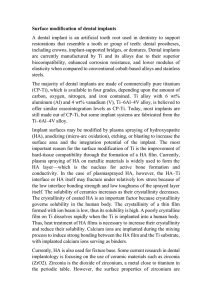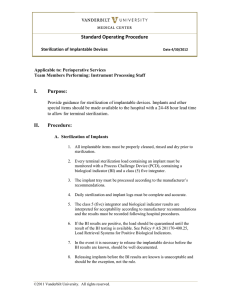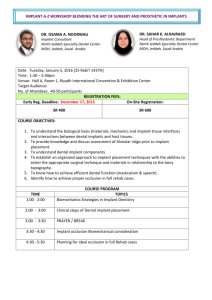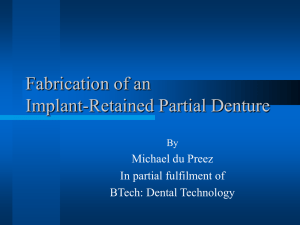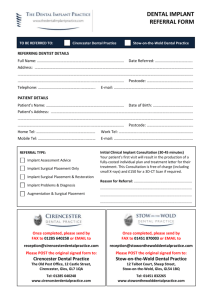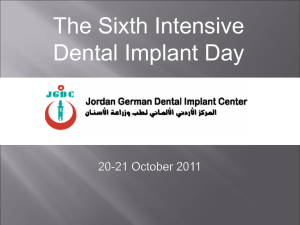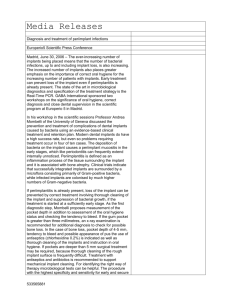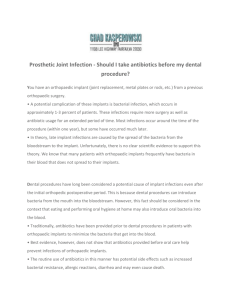sterilization techniques
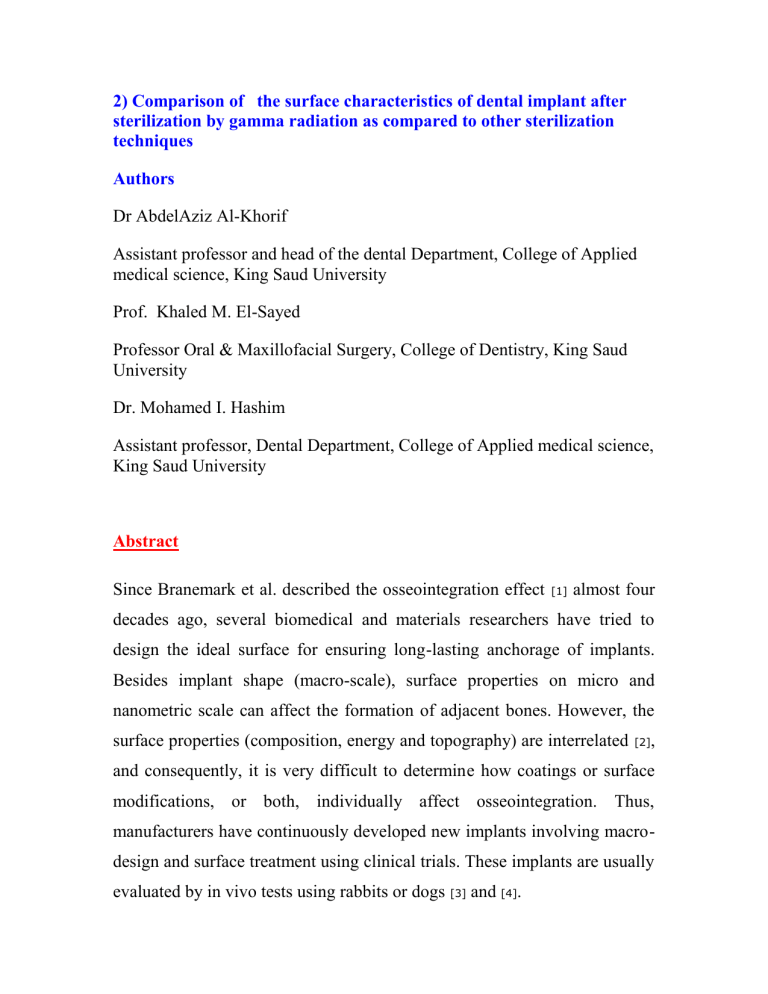
2) Comparison of the surface characteristics of dental implant after sterilization by gamma radiation as compared to other sterilization techniques
Authors
Dr AbdelAziz Al-Khorif
Assistant professor and head of the dental Department, College of Applied medical science, King Saud University
Prof. Khaled M. El-Sayed
Professor Oral & Maxillofacial Surgery, College of Dentistry, King Saud
University
Dr. Mohamed I. Hashim
Assistant professor, Dental Department, College of Applied medical science,
King Saud University
Abstract
Since Branemark et al. described the osseointegration effect [1] almost four decades ago, several biomedical and materials researchers have tried to design the ideal surface for ensuring long-lasting anchorage of implants.
Besides implant shape (macro-scale), surface properties on micro and nanometric scale can affect the formation of adjacent bones. However, the surface properties (composition, energy and topography) are interrelated [2] , and consequently, it is very difficult to determine how coatings or surface modifications, or both, individually affect osseointegration. Thus, manufacturers have continuously developed new implants involving macrodesign and surface treatment using clinical trials. These implants are usually evaluated by in vivo tests using rabbits or dogs [3] and [4] .
The effect of sterilization on the bulk and surface properties of biomaterials has been under investigation by many researchers [ 5 ,6, 7, 8 and 9 ] because sterilization, the last step of the processing of any implant material, may have an important clinical impact. However, the question of how the surface modifications may influence mineralization of biomaterials used as implant devices for substitution of bone tissue was scarcely addressed.

